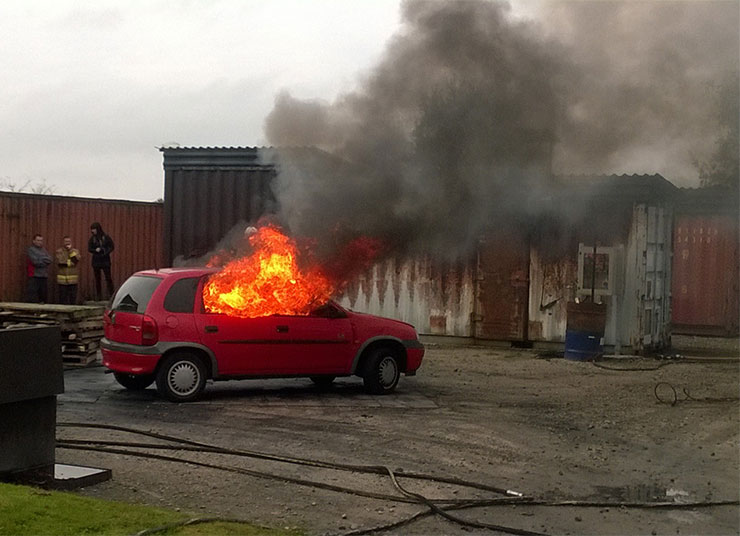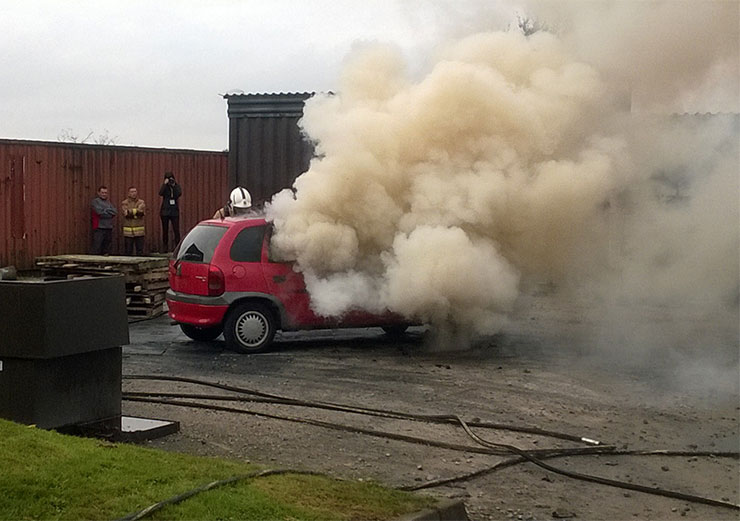Innovating frontline Fire & Rescue response
The modern UK Fire & Rescue Service is about putting fires out, right? Well, not entirely, writes Editorial Advisory Panel Member Andy Marshall in a preview of his full article in the Winter edition of Crisis Response Journal.
In the next edition of CRJ, I take a look at Staffordshire Fire & Rescue Service to find out more about the work it does. I discover that it is increasingly about prevention and protection work with the communities of Staffordshire and Stoke-on-Trent and local responders to help reduce demand on the service’s front-line response capability. However, in an emergency, the Fire & Rescue Service still has to be ready to respond so I get some first-hand experience of what this can be like…
Meanwhile, on Monday, November 10, 2014, Staffordshire Fire & Rescue Service and Firebug unveiled a new development in firefighting technology.
The ‘ST15’ hosereel branch employs a ‘misting’ approach to firefighting, a patented nozzle that produces an ultra-fine spray at low pressure to deliver significant improvements in performance over existing high-pressure hosereel branches.
ST15 was developed in response to Staffordshire Fire & Rescue Service’s end-user requirement to provide an effective, economical and safe means of tackling fires using smaller vehicles with a significantly reduced on-board water capacity. This echoes the Service’s far wider cultural challenge to do ‘more with less’ in response to the long-term pressures on public sector finances.
Speaking at the launch, Staffordshire’s Chief Fire Officer, Peter Dartford, explained that the Service needs to look closely at all areas of the Service in order to drive on-going efficiencies, without compromising on public or firefighter safety.

Above and below: the ST15 being demonstrated on a car fire

Peter emphasised that even: “How we fight fires is part of this.”
The new branch took 18 months to develop and it employs technology that is already widely used in fixed sprinkler and dust suppression applications in many industrial and commercial premises. Outwardly, the ST15 looks like any other conventional branch. However, in use, it is claimed to make one litre of water over 1600 times more effective in tackling fires, simply by cooling the fire as opposed to soaking the surface of the burning material. This provides potentially significant cost-savings, including using less water (thus producing less water run-off into the environment and reducing water damage), rapidly ‘knocking down’ a fire in its early stages, ‘scrubbing’ or cleaning toxic smoke in the immediate vicinity and being able to be employed on fuel fires.
The ST15 is currently being introduced across the Staffordshire Fire & Rescue Service fleet and further developments are expected in the near future to extend its use across a wider range of mainstream firefighting scenarios.
Andy Marshall, 14/11/2014